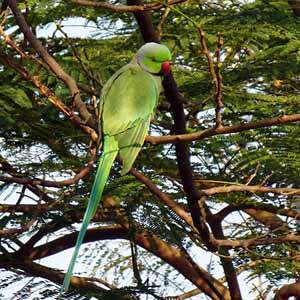How far will they go? Considerations on the potential expansion of the Ring-necked Parakeet (Psittacula krameri) and Monk Parakeet (Myiopsitta monachus) in Veneto region (Italy) with MaxEnt distribution models

Accepted: July 11, 2022
All claims expressed in this article are solely those of the authors and do not necessarily represent those of their affiliated organizations, or those of the publisher, the editors and the reviewers. Any product that may be evaluated in this article or claim that may be made by its manufacturer is not guaranteed or endorsed by the publisher.
Authors
Predictive models of species distribution, including several parakeets, may be very useful for understanding the actual and potential distribution of alien species. The Ring-necked Parakeet and the Monk Parakeet are two alien species found in the Veneto region (north-east Italy) that are well-suited for conducting potential distribution studies to identify suitable areas of occurrence. In this paper, I use the MAXENT algorithm to predict the potential distribution maps of these species in the Veneto region, which finds the probability distribution of maximum entropy that is constrained by the ecological parameters considered. The authors of the Veneto photo-sound atlas kindly provided presence data for the two species. The potential distribution models for the two parakeets performed very well overall (AUC = 0.966 for Ring-necked Parakeet and AUC = 0.987 for Monk Parakeet) and indicated that high suitability areas correspond primarily to areas near known occurrences of the species. Overall, the study found that the presence of the species in provinces other than those with large populations is highly unlikely. The distribution maps produced can aid in the selection of monitoring areas for these two alien species’ populations and potential expansion.
How to Cite

This work is licensed under a Creative Commons Attribution-NonCommercial 4.0 International License.
PAGEPress has chosen to apply the Creative Commons Attribution NonCommercial 4.0 International License (CC BY-NC 4.0) to all manuscripts to be published.

 https://doi.org/10.4081/jbr.2022.10570
https://doi.org/10.4081/jbr.2022.10570



